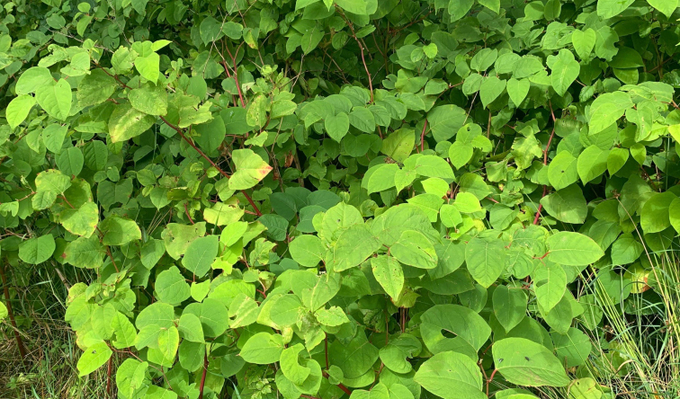
Japanese knotweed is a non-native plant that inhabits both urban and rural areas. It's the fastest-growing invasive species in the UK, and it spreads rapidly, often overwhelming other plant life. It can also cause huge issues for homeowners, as the presence of knotweed can reduce a property's market value.
In response to the problems posed by Japanese knotweed, the Royal Institution of Chartered Surveyors (RICS) developed an extensive assessment framework for surveyors to reference when inspecting an infested property.
Before we dive into the specifics of the RICS Japanese knotweed categories, we'll take a look at what happens at the start of an assessment and where the Japanese knotweed categories actually come into play.
How do surveyors assess the impact of Japanese knotweed?
A Japanese knotweed assessment is usually carried out in three stages:
1. Collecting information about the environment and the extent of the Japanese knotweed infestation
Information is collected through all stages of the assessment process. A pre-inspection is conducted to improve the surveyor's knowledge of the area; this can help the surveyor to identify general neighbourhood features that can then be compared against the target property. This is followed by a general evaluation of the property and the surrounding area. This can be done while the surveyor drives through the neighbourhood, or while preparing for the inspection.
Next comes the inspection itself. This is where the surveyor inspects all visible aspects of the property. Prior to this, a surveyor should ask the homeowner about their experience so that any information can be followed up during the inspection.
2. Analysis to identify Japanese knotweed and establish the magnitude of the issue
The surveyor should identify Japanese knotweed if visible, with reference to an identification guide. There are a few similarities between Japanese knotweed and other species - see How to Identify Japanese Knotweed for more information.
Send Us a Photo
3. Using the RICS Japanese knotweed categories to advise the client
This is the important assessment framework that supports future decisions regarding inspection and treatment. Read on to learn more about the RICS categories.
RICS Japanese Knotweed Categories Explained
The RICS Japanese knotweed categories go in ascending order, from least to most impact on the affected property and neighbouring areas. These categories can be used by a surveyor to fully inspect and evaluate the effect of Japanese knotweed on a property.
According to the Environmental Agency's The Knotweed Code of Practice, Japanese knotweed rhizomes can extend up to seven metres horizontally and three metres vertically from the last sign of visible surface growth. For this reason, 7m is used as a minimum distance in the assessment process.
CATEGORY 1
Japanese knotweed was not seen at the property. It was seen on neighbouring property / land, but it is more than seven metres away from the property boundary.
CATEGORY 2
Japanese knotweed was not seen within the boundaries of the property. It can be seen within seven metres of the property boundary, but it is more than seven metres from any habitable spaces (including conservatories and garages).
CATEGORY 3
Japanese knotweed was found on the property, but it was more than seven metres from the nearest habitable space. Any damage to walls, paths, outbuildings, etc. is minor.
CATEGORY 4
Japanese knotweed has been found within seven metres of a habitable space (whether on the property in question or a neighbouring property). Category 4 also applies in any situation where Japanese knotweed has caused serious damage to outbuildings, paths, walls, fences, etc.
Is there Japanese knotweed near your property? We can help!
Japanese knotweed can be difficult to control, but taking action early on will minimise its impact.
As Japanese knotweed treatment techniques improve and more information comes to light regarding this invasive species, we at Total Weed Control will continue to provide high-quality advice and reassurance for our clients across South Wales and the South West.
Get in touch today to book a free Japanese knotweed survey.
Request a Free Survey
